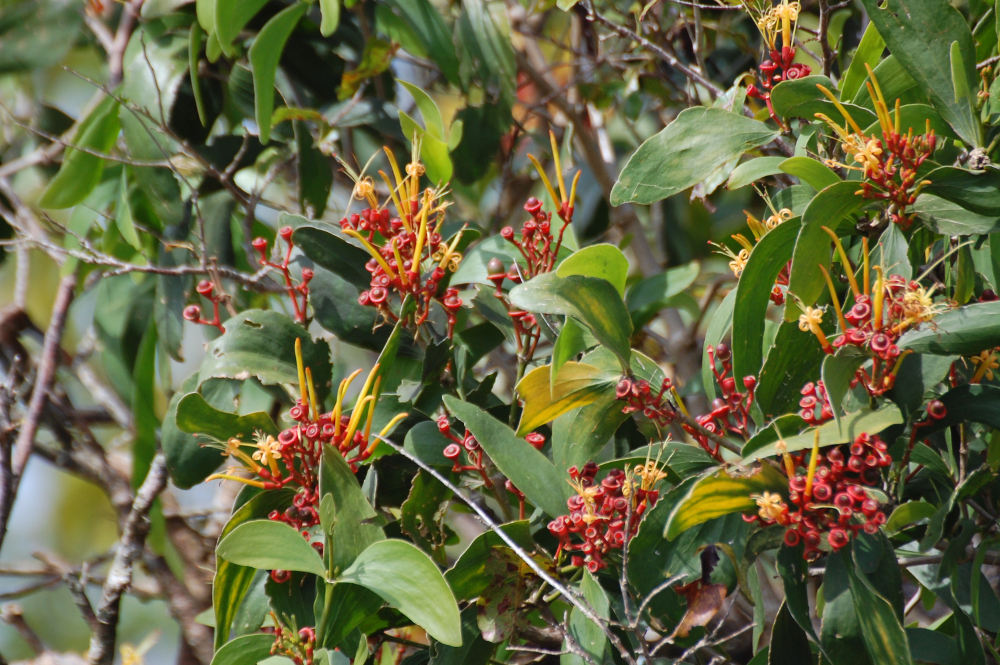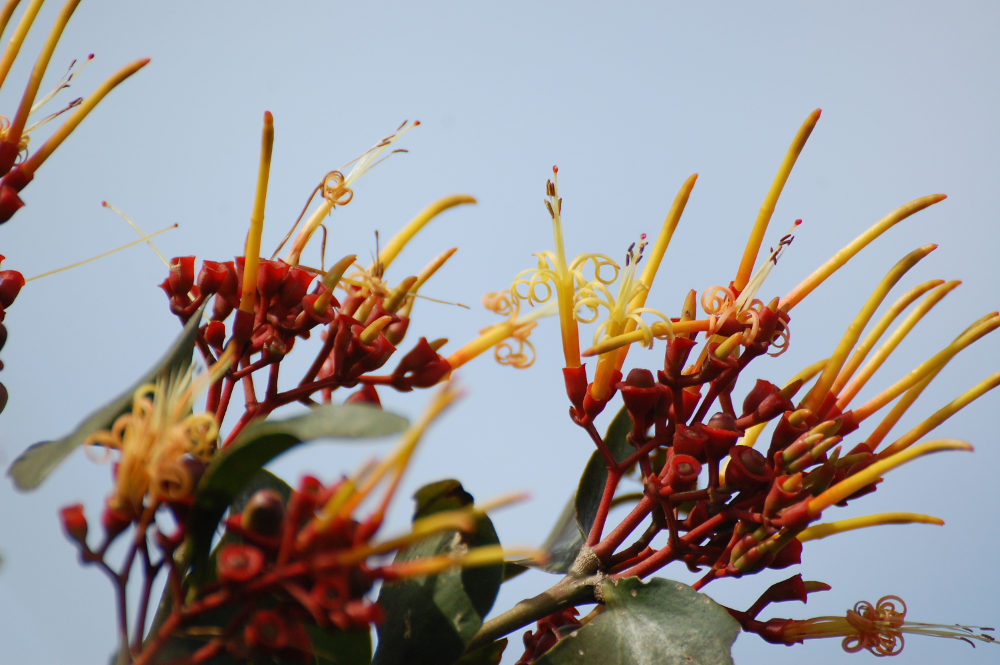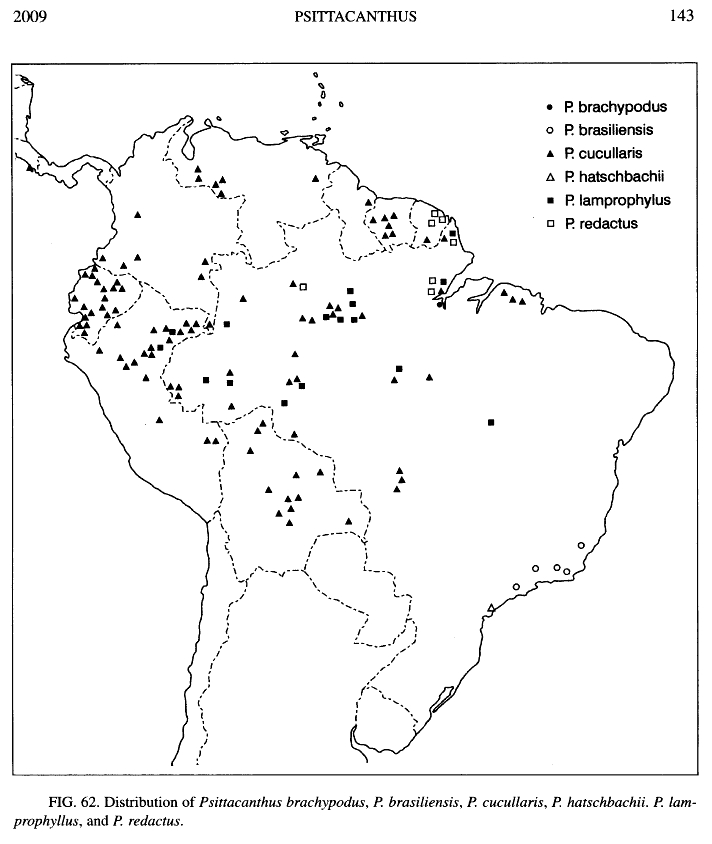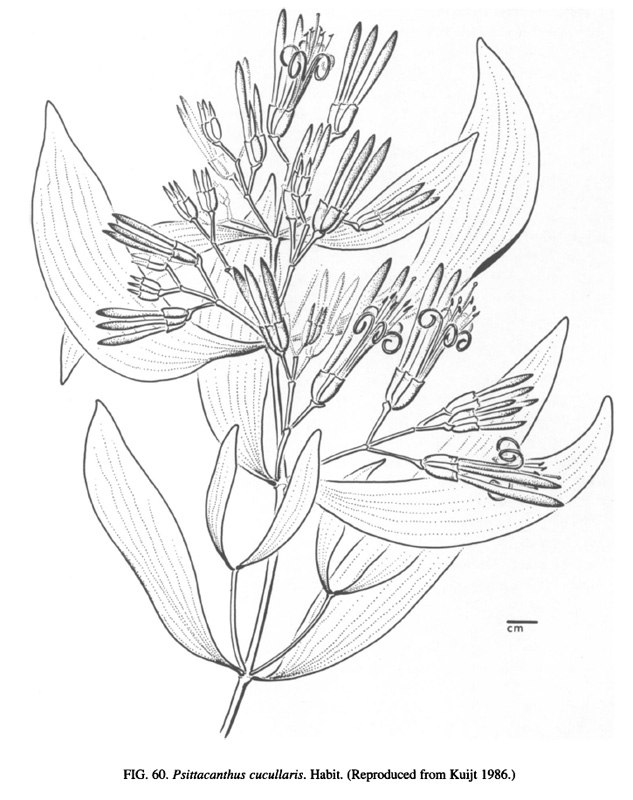| Autore |
 Discussione Discussione  |
|
|
ross46
Utente Super
    
Città: vercelli
Regione: Piemonte

8832 Messaggi
Flora e Fauna |
 Inserito il - 20 luglio 2018 : 23:06:00 Inserito il - 20 luglio 2018 : 23:06:00


|
Ciao, questi fiori erano di un albero semisommerso dalle acque del Rio Juma
Immagine:

188,34 KB
|
Modificato da - baudino in Data 22 luglio 2018 23:14:22
|
|
|
ross46
Utente Super
    
Città: vercelli
Regione: Piemonte

8832 Messaggi
Flora e Fauna |
 Inserito il - 20 luglio 2018 : 23:07:03 Inserito il - 20 luglio 2018 : 23:07:03


|
Immagine:

126,96 KB
che fiori sono? Grazie
Ross |
 |
|
|
baudino
Moderatore
   
Città: Robilante
Prov.: Cuneo
Regione: Piemonte

3977 Messaggi
Flora e Fauna |
 Inserito il - 21 luglio 2018 : 05:40:27 Inserito il - 21 luglio 2018 : 05:40:27


|
La pianta è senz'altro un Psittacanthus sp., appartenente ad un genere di Loranthaceae neotropicali, in pratica un "vischio" (Loranthaceae)tropicale emiparassita che cresce sulla sua pianta ospite.
Per quanto riguarda la definizione di specie è sempre molto difficile tenendo presente che nel solo Brasile di Psittacanthus se ne contano 46 specie, la maggioranza senza alcuna documentazione fotografica reperibile in rete. Per fortuna ho qui la corposa monografia (361 pagine)del massimo esperto del Genere Psittacanthus: Job Kuijt (Monograph of Psittacanthus (Loranthaceae), 2009). Per cui seguendo le chiavi dicotomiche sono arrivato alla specie che secondo me è la più probabile: Psittacanthus cucullaris (Lam.) G.Don
Riporto qui di sotto alcuni passi di questa chiave e alcune osservazioni sulla specie del Kuijt:
Inflorescence triadic.
11. Leaves (short-)petiolate.
13. All flowers sessile, primary bract foliaceous, ovary obscured by cylindrical cupule; P. cucullaris
Commento:
"Psittacanthus cucullaris is an unmistakable species because of its sessile or nearly sessile flowers, its long, tubular cupule (often referred to as a "calyx" in collector's notes), and its foliar triad bract; however, it is quite variable in both leaf and bract features. While the leaves tend to be curved or even falcate, one extreme in leaf shape is seen in Prance & Prance 14773, where leaves are to 12 cm long, to 1.5 cm wide, and essentially symmetrical. Plants from Ecuador, in contrast, may have broad leaves. The triad bracts are especially variable in shape and size. In Klug 2325, Peru (Loreto), the bracts are 2 mm long. The other extreme is seen in plants such as Prance & Pennington 2001, where the bracts are bright red and 2.5 cm long, to 2.5 cm wide, and in Estrada & Chacon 3032 from Costa Rica, where some of the lowest bracts are foliaceous, to 3.5 cm long, to 0.8 cm wide. The portion of the inflorescence most responsible for the (color) attraction of insects or birds, therefore, seems to be the bract, a unique situation in the genus. There seems to be a gen eral tendency for the bracts in the Peru-Ecuador area to be smaller than in other parts of the range. "
Come si può osservare la specie è molto variabile per cui il paragone con immagini del web può suscitare perplessità ( specie sulla dimensione delle brattee). Aggiungo qui sotto due illustrazioni tratte dalla monografia che illustrano sia la specie che la sua distribuzione
Immagine:

166,9 KB
Immagine:

153,55 KB |
bruno |
 |
|
|
ross46
Utente Super
    
Città: vercelli
Regione: Piemonte

8832 Messaggi
Flora e Fauna |
 Inserito il - 21 luglio 2018 : 14:19:10 Inserito il - 21 luglio 2018 : 14:19:10


|
 Sono stupito dal lavoro che c'è dietro una domanda elementare come quella pongo ogni volta che posto una foto. E ammirato dalla capacità nel dare risposte. Grazie mille Bruno. Sono stupito dal lavoro che c'è dietro una domanda elementare come quella pongo ogni volta che posto una foto. E ammirato dalla capacità nel dare risposte. Grazie mille Bruno. 
Ross |
 |
|
|
baudino
Moderatore
   
Città: Robilante
Prov.: Cuneo
Regione: Piemonte

3977 Messaggi
Flora e Fauna |
|
|
ross46
Utente Super
    
Città: vercelli
Regione: Piemonte

8832 Messaggi
Flora e Fauna |
 Inserito il - 23 luglio 2018 : 07:13:34 Inserito il - 23 luglio 2018 : 07:13:34


|
 Ciao Ciao
Ross |
 |
|
| |
 Discussione Discussione  |
|
|
|
 Natura nel Mondo Natura nel Mondo |
© 2003-2024 Natura Mediterraneo |
 |
|
Cooperativa Darwin
| Leps.it | Herp.it
| Ecotrekking.it
| Lynkos.net
|

 Forum
|
Registrati
|
Msg attivi
|
Msg Recenti
|
Msg Pvt
|
Utenti
|
Galleria |
Map |
Forum
|
Registrati
|
Msg attivi
|
Msg Recenti
|
Msg Pvt
|
Utenti
|
Galleria |
Map |